For any home cook — even if, for you, that just means making scrambled eggs and pasta — there are a few essential tools that are a must. A knife and cutting board are chief among them, but equally as important is a stovetop vessel. While big box stores are full of flimsy pots and pans hawking “miracle” nonstick surfaces, we prefer to go old school. Cast iron pans, unequivocally, are the queen of the kitchen.
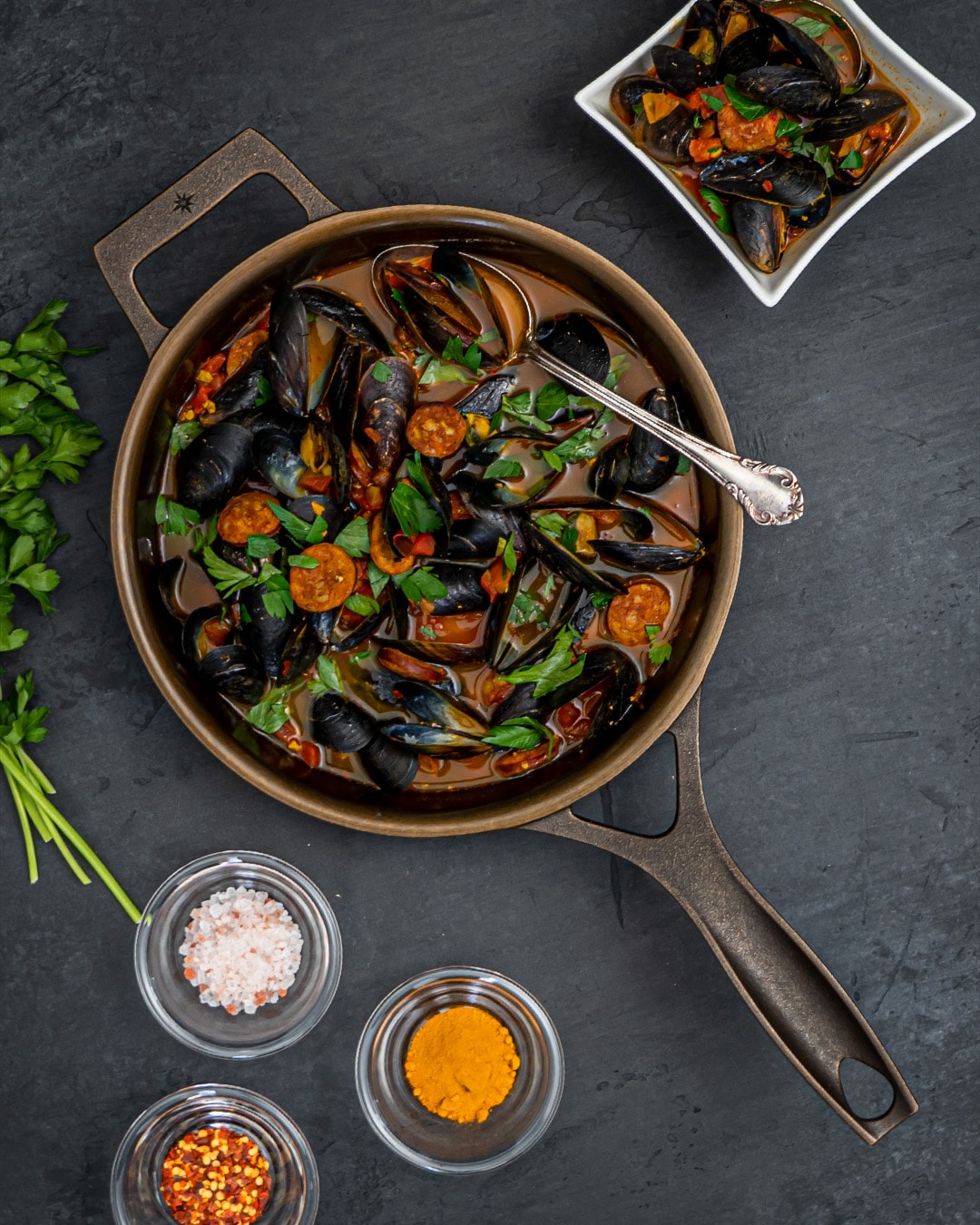
With formidable heft, even cooking surfaces and natural non-stick that comes from oil absorption in the pan — not creepy chemical coatings, thankyouverymuch — cast iron pans are our favorites to cook with. That said, not all cast iron pans share the same level of quality and craftsmanship. There’s a lot of sub-par cast iron out there, some of which still come with high price tags.
But a few companies get cast iron pans just right: ingenious design features, a beautiful shape, and amazing construction all in one beautiful, functional package. One of these is Stargazer Cast Iron, from right here in Pennsylvania, and they make some of the best cast iron pans in the game!
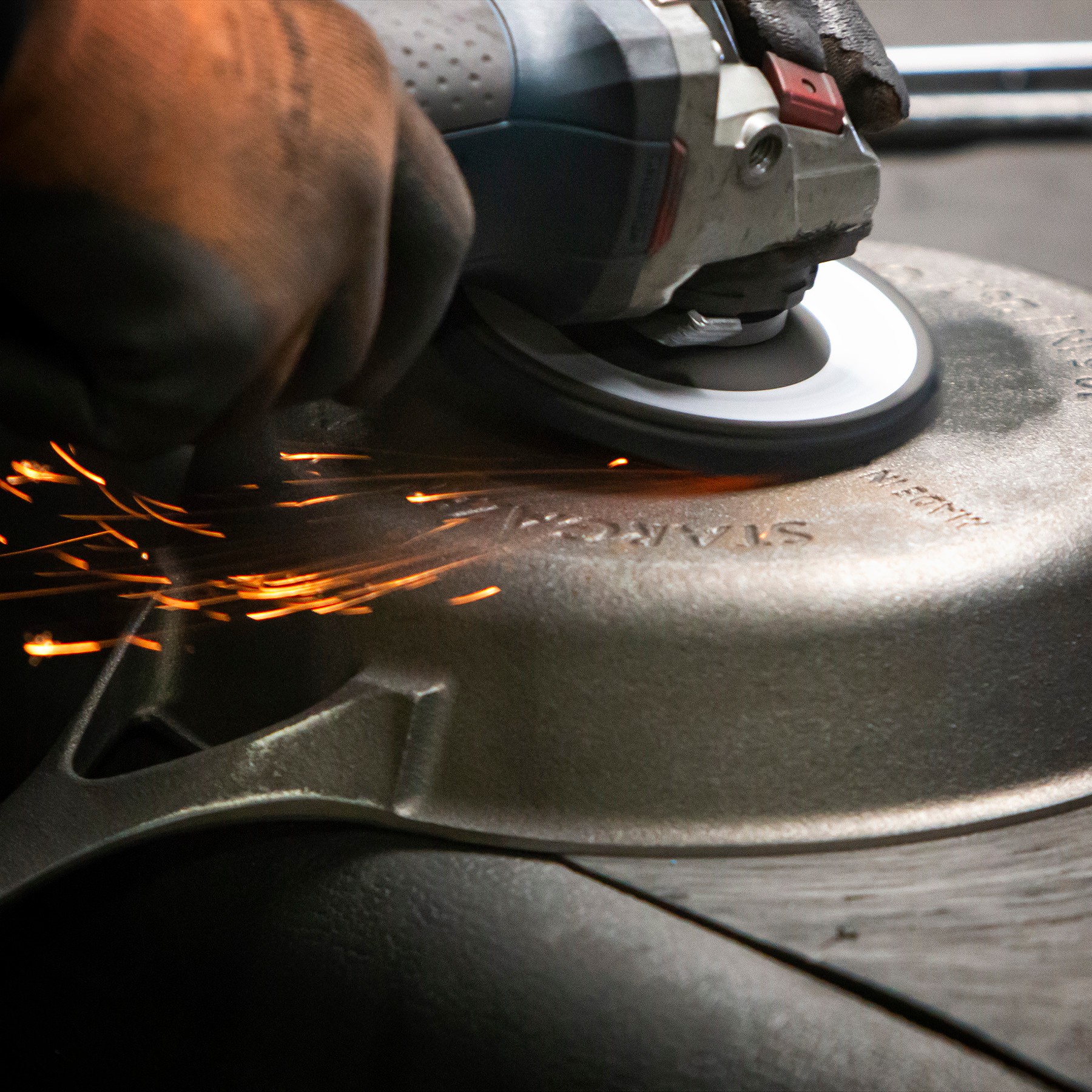
Headquartered in Allentown, PA, Stargazer was founded by Peter Huntley in 2015. Almost immediately, the company’s products resonated with people, ranging from casual cooks to cast iron aficionados, and the growth of the brands has been formidable. Just check out Stargazer’s Instagram page to see how their nearly 30,000 followers are constantly tagging them in their food photos! We love that a cookware brand so focused on quality and craftsmanship calls Pennsylvania its home.
We were excited to get the chance to speak with Huntley to learn more about Stargazer’s beginnings, and to dig into some of the technical and design features of the pans that make them so special.
PA Eats: Can you tell us a bit more about your background? Did you grow up in Pennsylvania?
Peter Huntley: I grew up in Connecticut in Fairfield County, went to school at Lafayette College in Easton, that was my introduction to the area. After graduating, I bounced around for a couple of years, and when it was time to settle down, my girlfriend and I came back to the Lehigh Valley. I was planning on starting a business at the time, and thought Pennsylvania would be a good state to have a business in. We were picking a home base for the company and for us… That was in 2015.
How did you make your way to cast iron?
I got into cooking with cast iron at home, and I fell in love with the material and the way that it cooks. But at that time, I hadn’t seen anything else like Stargazer, with a fully machined surface. I also just didn’t see some of the design features that I thought were practical and should be there.
You had some professional background in cookware design, right?
Yeah, I worked in the general housewares space, so I’d been designing plates and mugs and that kind of thing. I was also doing more of the production manufacturing side, coordinating with factories and understanding supply chain and how things are made and moved from production to market. I had a sense of the mechanics of that. But when it came to cast iron, I had to learn a lot.
How do you learn something like that?
I learned along the way, on the job. When I designed the first version of the skillet, I spoke with some foundries and it looked like it was a viable product that could be made at a reasonable cost. But there were years of troubleshooting. For the first two years in particular, we were constantly changing our process and refining the way were doing our surface finish treatment.
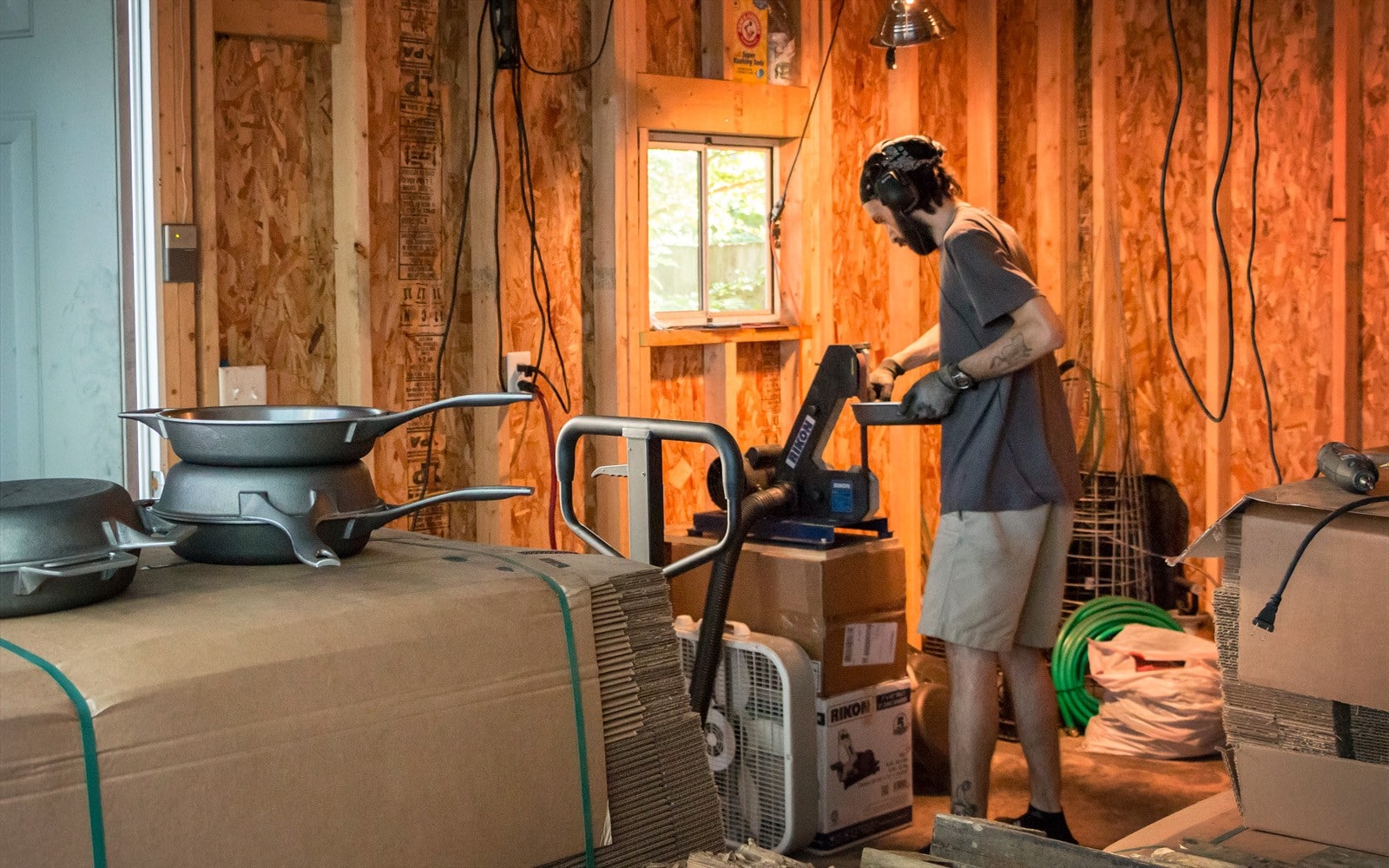
Peter Huntley working in his garage in 2016
Our first production run in 2016 was processed in my one-car garage, done mostly just by me. Through 2016 and 2017, we went through a couple of different revisions and updates, refining as we went, and scaling. Producing at scale was one of the biggest hurdles along the way, and we’ve fallen behind at times because the demand has outpaced us.
Can you tell us a little more about the design features that make Stargazer Cast Iron pans so awesome?
Design-wise, I thought the pan should be a certain shape and size. We added the flared rim and the helper handle, to make it easier to use. All of the geometry got sorted out pretty early.
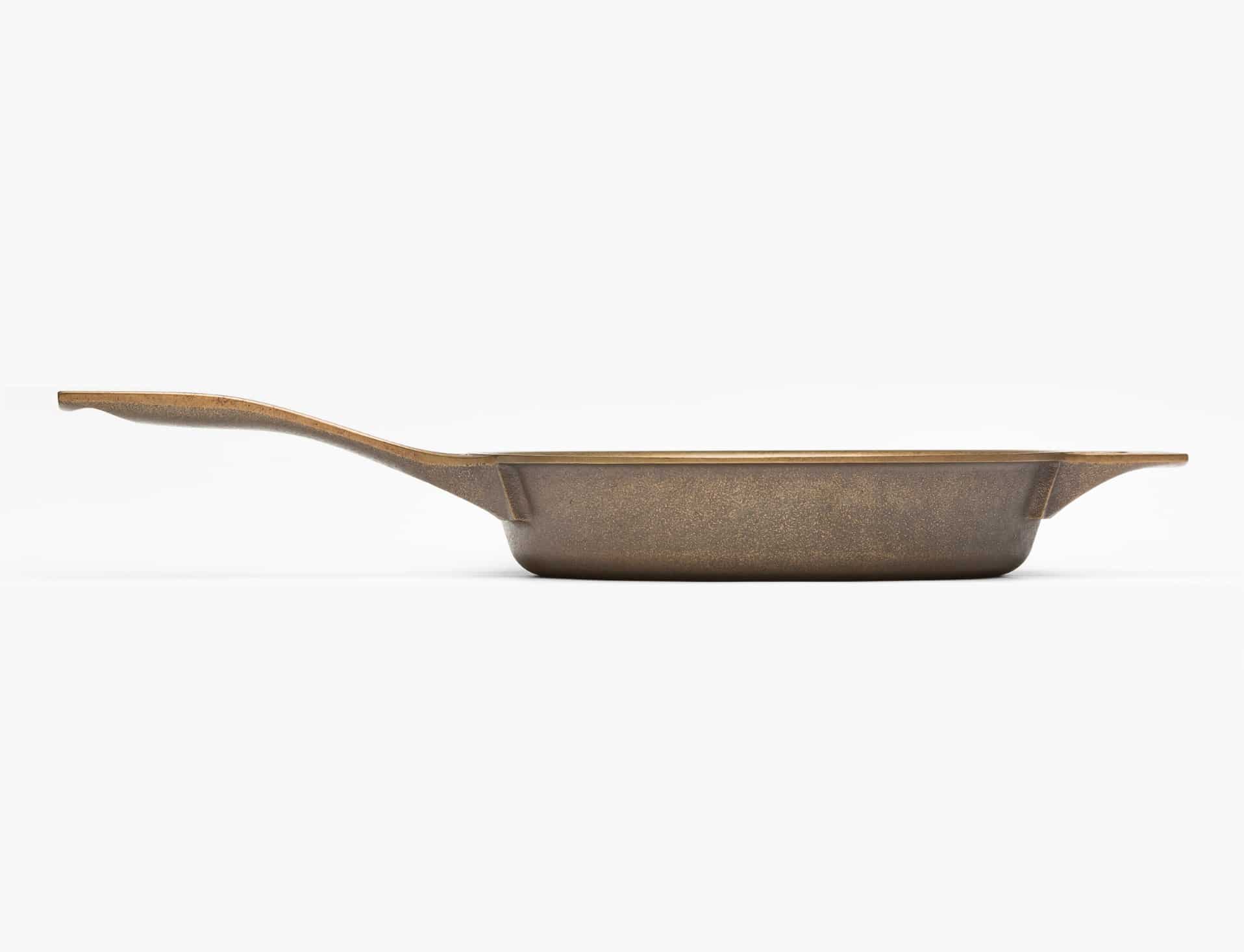
The surface finish was the more involved part. We want it to hold the seasoning, and food shouldn’t stick to it. There’s the give and take: If the surface is totally slick and completely non-porous, then liquid or seasoning beads up like on glass, so it won’t hold the coating. But if it’s really porous, like some of my competitors’, you’re going to see a lot more food sticking, because there are more nooks and crannies. We wanted that “Goldilocks zone” to smooth it out, but also have enough grip for the seasoning. That’s where all the research went. For the first two years in particular, we were constantly changing our process and refining the way were doing our surface finish treatment. But in 2018, we hit our stride and really dialed it in.
How exactly are cast iron pans made? Can you walk us through the process?
The product starts with raw material: hunks of metal. The vast majority of our material is recycled! Anything that was cast iron in a former life, from engine blocks to railroad parts, you can keep melting and recycling it. The metal gets melted down in a big cauldron of molten iron, it’s like 2,600 to 2,800 degrees and it glows orange like hot lava. The process to make the pans that we use is called green sand casting. We take a master pattern, that’s the shape of a skillet mounted to a plate, you press it into wet sand and clay to make an impression of the skillet under high pressure. Then you pour the molten iron into the cavity and let it cool. That skillet is now in sand, and when the iron is cool, you put it on a vibrating conveyor belt that shakes all the sand off. After that it goes to a machine shop, which is the first step in the surface treatment and dialing in the exact thickness. The thickness is crucial to the performance of the pan, to the heat retention and distribution. We’re really specific. We measured in thousands of an inch, that’s like the thickness of a couple sheets of paper.
That first step happens in foundries we work with in Wisconsin and Ohio. Everything that happens before it gets here is securely under our control, we don’t just buy castings from a foundry. The pattern is our property, our design, we’re giving these shops really specific instructions.
When the pans get to us in Allentown, that’s where we do all the handwork and finishing work. First, the skillets are inspected four times, it’s rigorous quality-control. We’re checking material thickness, weight, surface finish and quality of the casting. We even do spot checks where we cut skillets in half and look at the internal structure.
Then we do 3 or 4 steps of hand-grinding, that’s the highly skill part of the work. I have a few people that have been with us for three or more years at this point, who are really dialed in, using hand power tools doing the finish grinding work.
After that, the pans go into our two surface finish surface machines. Any remaining edges are rounded over and smoothed out. Then it gets cleaned and goes to coating. If the customer orders the unseasoned, we coat it in mineral oil to protect it in transit. If we’re seasoning it, we have our own seasoning blend with canola, grape seed and sunflower oils. The skillet gets preheated and the oil is sprayed on. This is a totally manual process, each pan gets sprayed down, one at a time, the excess is wiped off, and then they are fired in bakery-style ovens at 475 degrees. Then, we cool them down, warm them up and spray them again, and every skillet is run through twice. We’re not trying to achieve a jet black finish out of the gate, that’s not the goal. I want a good starting point to the seasoning, and then the customer is getting it the rest of the way there, naturally with time. All the pans are packed in boxes made from 100% recycled paper from a company in Emmaus, and they ship straight from here.
Stargazer is a 100% direct-to-consumer model, right? Why did you decide to structure the company that way?
There’s a brand American Giant that makes clothing, and I heard about them and bought some of their products a few years before starting Stargazer. They have a 100% domestic supply chain and they’re still fully DTC (direct-to-consumer). If you want their products, you go to their website. It became clear to me, even five years ago, that more people are buying more things online, and for us it was just a question of getting them to go to one website versus another. It felt like a jumpable hurdle. That was one of my original goals. I wanted to have all of our products be 100% American-made, which they are, and commit to this DTC model.
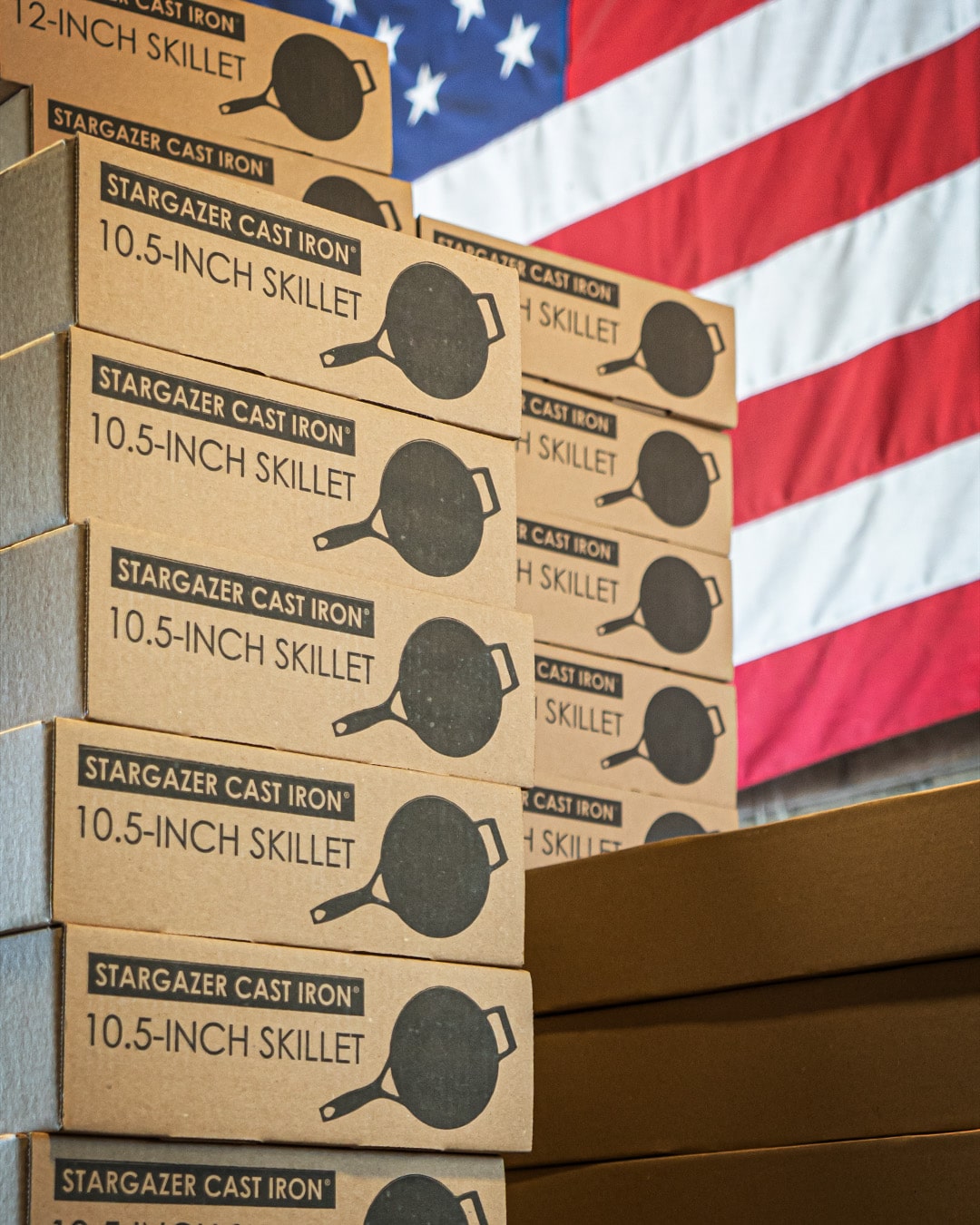
The DTC business model is one of the things that sets us apart from some of our premium competitors. I’ve seen every skillet on the market and I know that ours are half the price of many and twice the quality of many. I think the price-to-quality relationship has a lot to do with the distribution model. Stargazer is currently the most affordable, American-made, machine smoothed, cast iron product. When you’re talking about manufacturing on the scale of big box stores, this level of quality is cost and labor prohibitive.
Have you ever questioned the model?
The conversation has come up. Retailers reach out to us and ask to stock our product, and it’s like, “Are we turning down business?” But, to us it’s been pretty clear: That’s not the model or the goal.
One of the things we love about the DTC model is that you’re building a relationship with the customers. You’re not at arm’s length. A lot of this model is about accountability that comes with that relationship. If you buy a Stargazer product you come to us, and if our name is on it, it was produced by us and shipped by us. It’s a very hands-on type of thing. I don’t think it should be the goal [as a company] to get as big as possible, but to make a product we believe in, and take care of our customers and our employees.
Currently, Stargazer sells two products: 10.5-inch and 12-inch cast iron pans. Do you have plans to expand the line, or is it intentionally a tight selection?
We had a very ambitious 2020 planned. We hoped to launch up to four new products this year. But with the pandemic, we had different parts of our supply chain shut down at different times. Some of them I have casting samples for here in Allentown, and I expect in the next six months we’ll be rolling out different items. We can design and develop a lot more efficiently than five years ago, and a lot of that is about growing a team of people supporting the vision.

Did the pandemic change things for the company in other ways?
The early part of the pandemic really changed a lot for us. We had a lot of damage control measures that had to be taken, both in terms of safety and sorting out all the supply chain interruptions and trying to keep the skillets in production. There was all of this new demand! Summer is usually our slower season, as people are outdoors and thinking less about cooking. Then sales ramp back up in fall, and even more with the holidays. But during the pandemic, we saw this surge through April, May and June. People stuck at home, cooking a lot more, and taking a fresh look at their cooking hardware.
Can you share a bit more about your commitment to sustainability?
We are so committed to keeping it sustainable, both environmentally friendly in the production and using those recycled materials whenever we can. The sand molds I was talking about before, they’re recycled. There are so many examples of that in our supply chain. We’re also making a product that’s not disposable, it’s not going to end up in a landfill. With a small amount of care, it will last for so long. Cast iron seasoning is the only renewable nonstick seasoning. Even expensive chemical coatings last maybe 10 years at best.
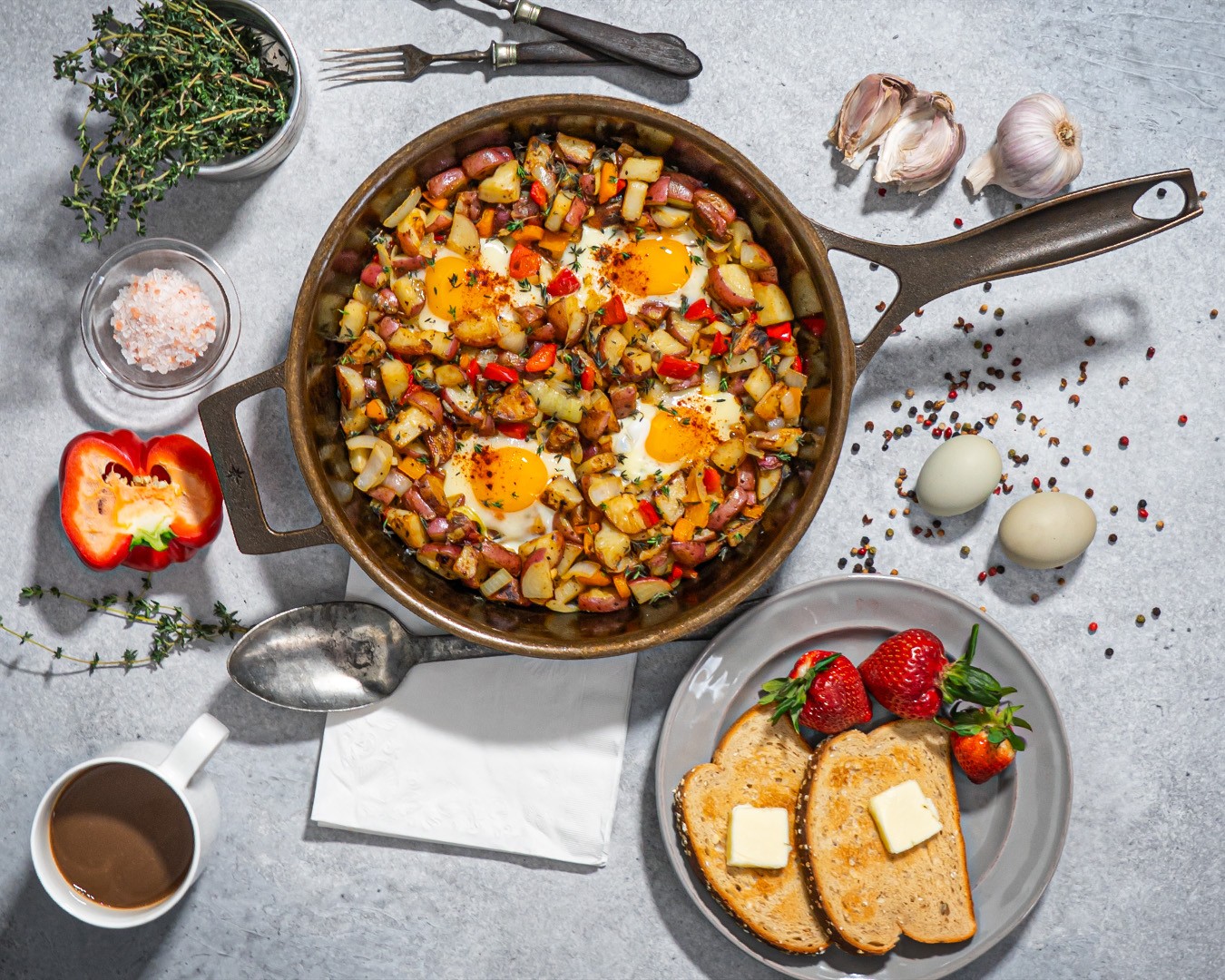
Okay, we’ve got to ask: Do you cook with anything besides Stargazer pans?
Except for boiling water, everything I cook is in a Stargazer! Your skillet is a personal thing, it’s like your favorite jeans.
To learn more about Stargazer, including the charitable causes it supports, or to shop online, visit its website. It also operates a small storefront in downtown Allentown, where you can shop IRL, Monday through Friday from 8:30 a.m. to 5 p.m.
Find Stargazer Cast Iron at 2002 S. 12th St. in Allentown; phone: (484) 273-2492.
- Photos: Stargazer Cast Iron
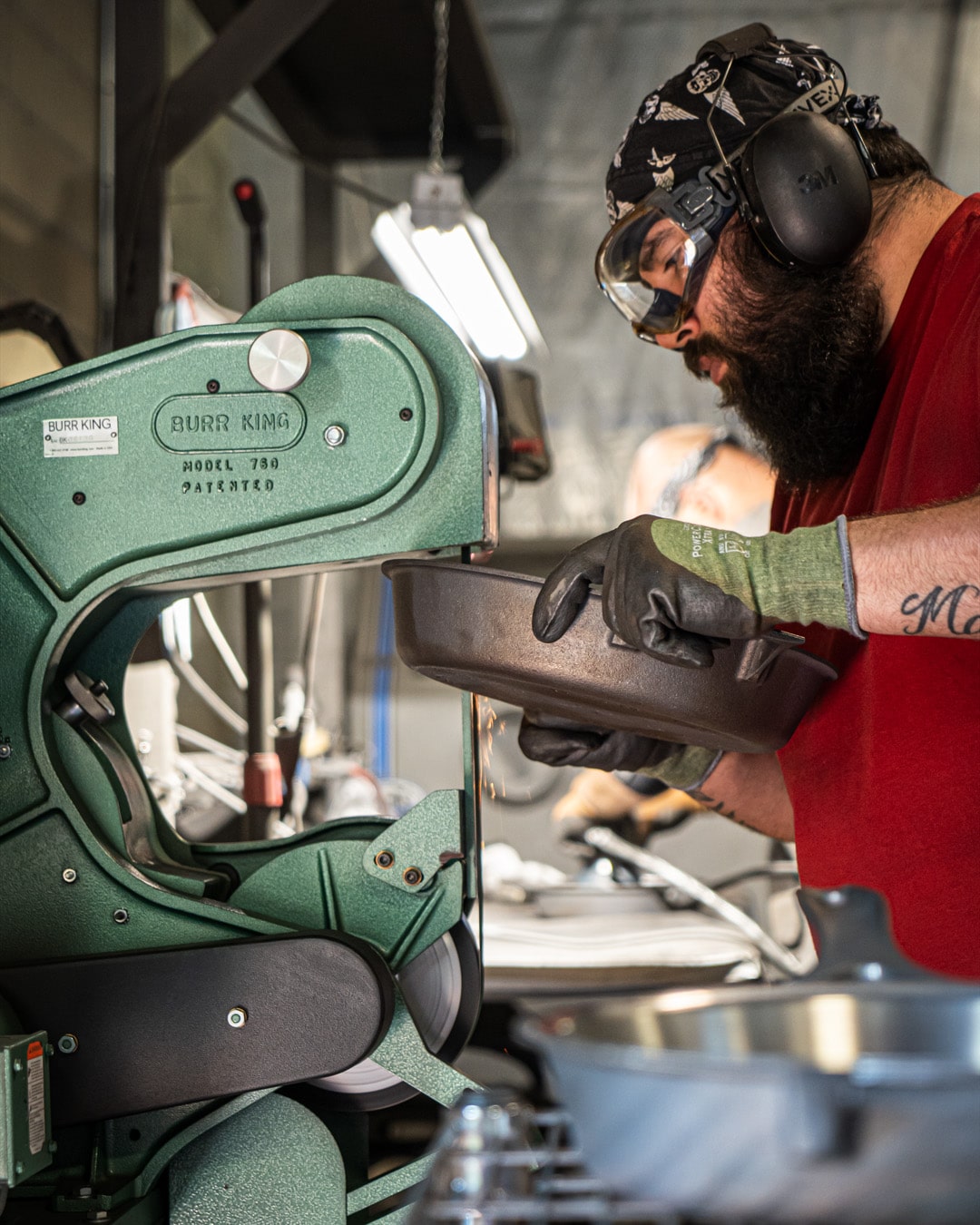
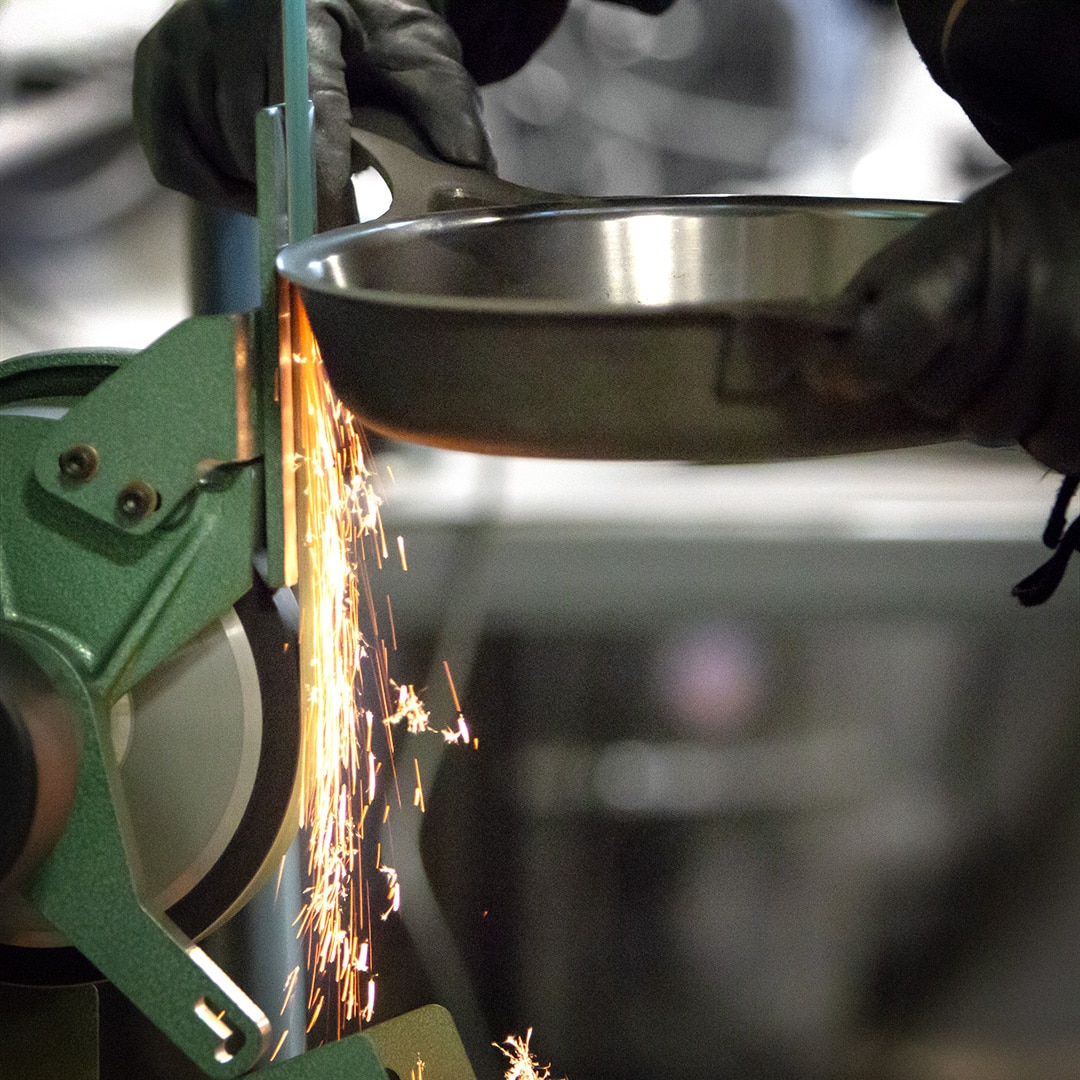
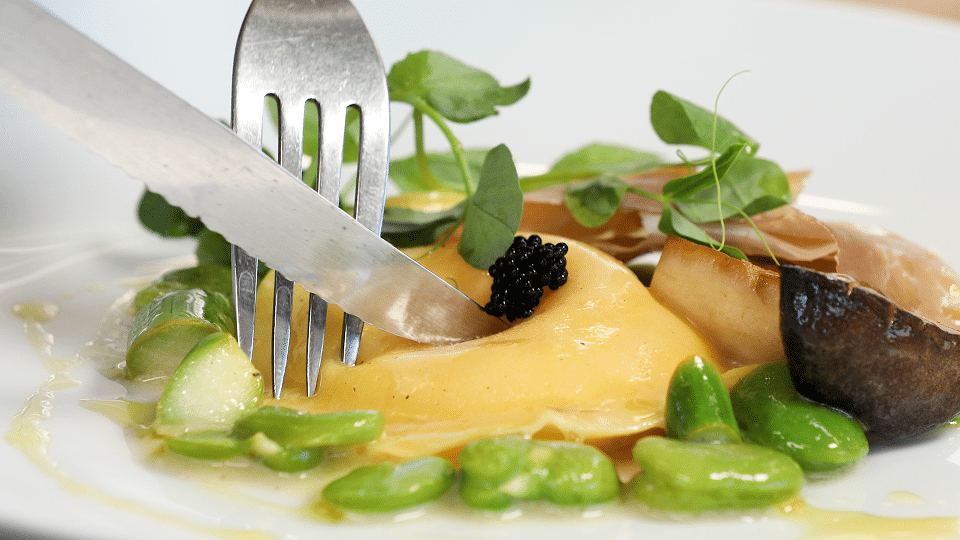
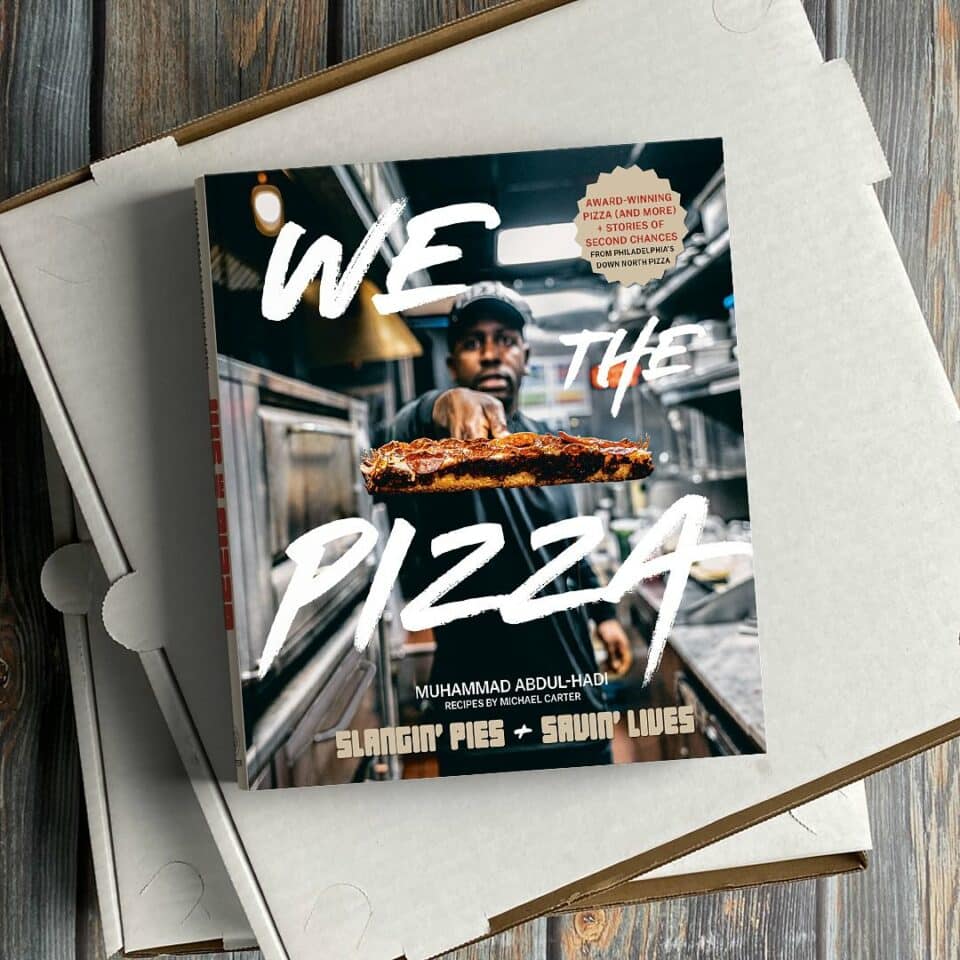
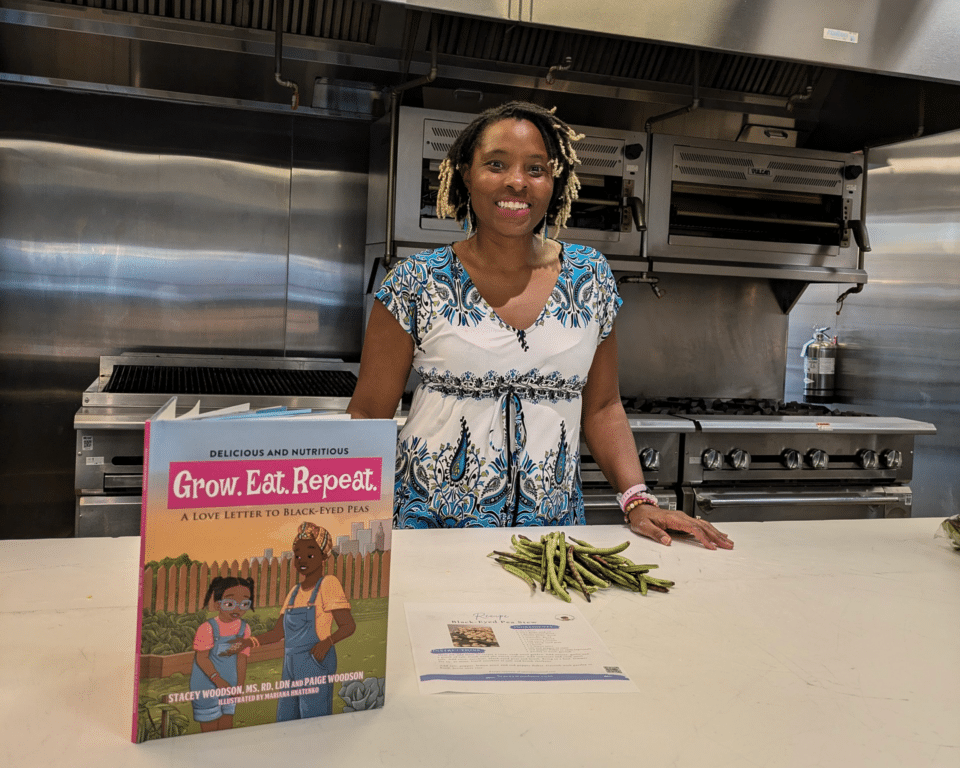
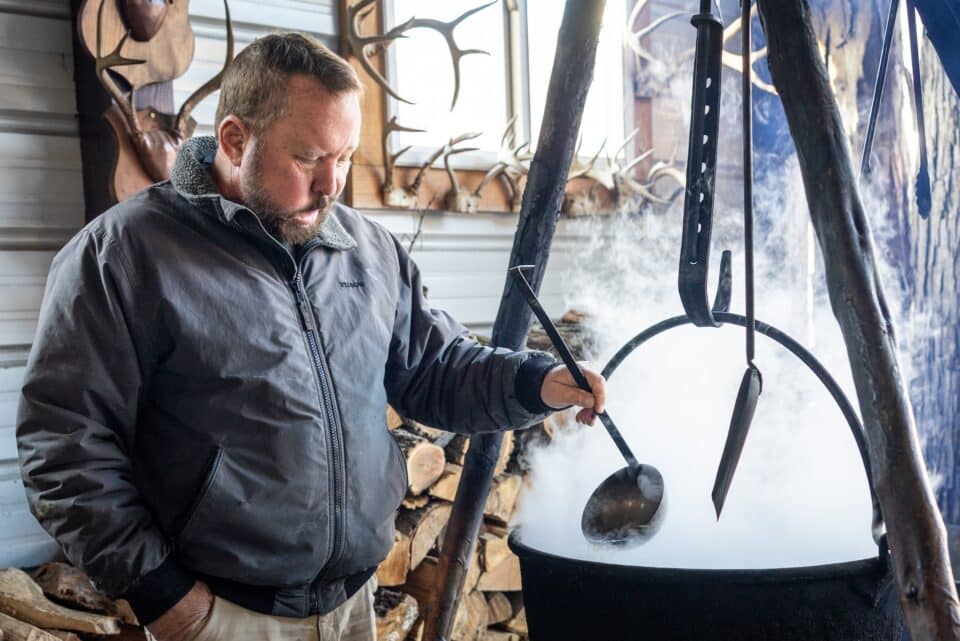

One Comment